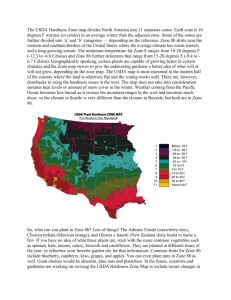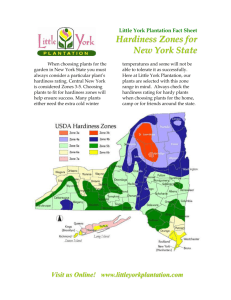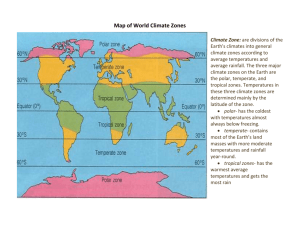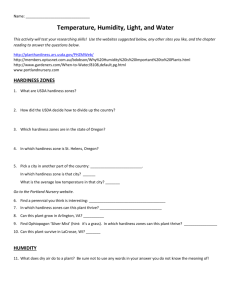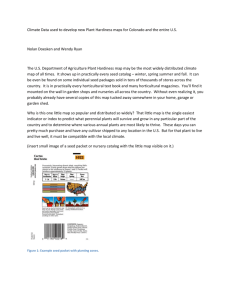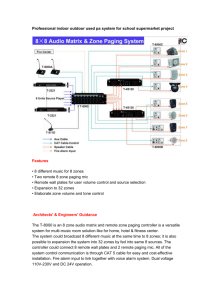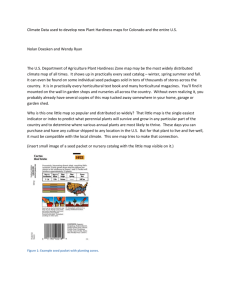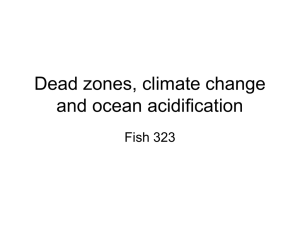explanation
advertisement
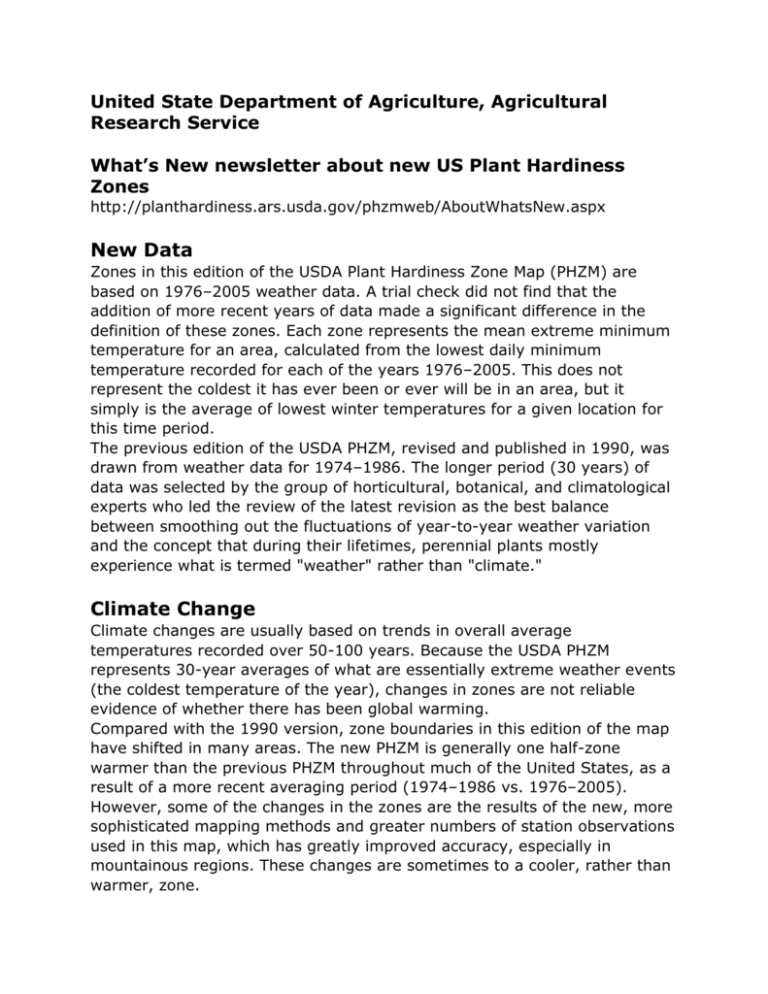
United State Department of Agriculture, Agricultural Research Service What’s New newsletter about new US Plant Hardiness Zones http://planthardiness.ars.usda.gov/phzmweb/AboutWhatsNew.aspx New Data Zones in this edition of the USDA Plant Hardiness Zone Map (PHZM) are based on 1976–2005 weather data. A trial check did not find that the addition of more recent years of data made a significant difference in the definition of these zones. Each zone represents the mean extreme minimum temperature for an area, calculated from the lowest daily minimum temperature recorded for each of the years 1976–2005. This does not represent the coldest it has ever been or ever will be in an area, but it simply is the average of lowest winter temperatures for a given location for this time period. The previous edition of the USDA PHZM, revised and published in 1990, was drawn from weather data for 1974–1986. The longer period (30 years) of data was selected by the group of horticultural, botanical, and climatological experts who led the review of the latest revision as the best balance between smoothing out the fluctuations of year-to-year weather variation and the concept that during their lifetimes, perennial plants mostly experience what is termed "weather" rather than "climate." Climate Change Climate changes are usually based on trends in overall average temperatures recorded over 50-100 years. Because the USDA PHZM represents 30-year averages of what are essentially extreme weather events (the coldest temperature of the year), changes in zones are not reliable evidence of whether there has been global warming. Compared with the 1990 version, zone boundaries in this edition of the map have shifted in many areas. The new PHZM is generally one half-zone warmer than the previous PHZM throughout much of the United States, as a result of a more recent averaging period (1974–1986 vs. 1976–2005). However, some of the changes in the zones are the results of the new, more sophisticated mapping methods and greater numbers of station observations used in this map, which has greatly improved accuracy, especially in mountainous regions. These changes are sometimes to a cooler, rather than warmer, zone.
